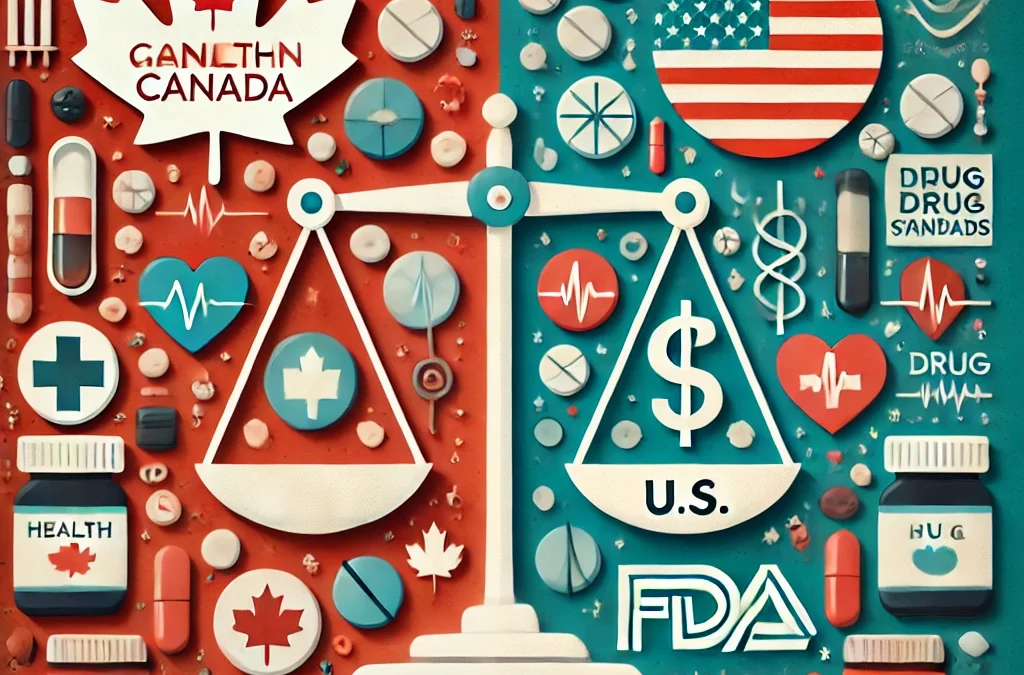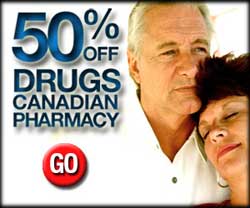Understanding the Differences Between Canadian and U.S. Drug Regulations
When purchasing prescription medications, safety and efficacy are top priorities for consumers. For those considering buying medications from Canadian pharmacies, it’s important to understand the regulatory differences between the Canadian and U.S. systems. This knowledge can provide peace of mind, knowing that Canadian drug regulations are strict, ensuring high standards for drug safety, approval, and distribution.
In this article, we’ll explore how Canada’s drug regulation system works, how it compares to the U.S. Food and Drug Administration (FDA), and why purchasing medications from licensed Canadian pharmacies is a safe, cost-effective alternative for U.S. residents.
1. How Canada Regulates Prescription Drugs
Canada’s regulatory body, Health Canada, oversees the approval and monitoring of prescription medications sold in the country. Health Canada’s processes ensure that all medications are safe, effective, and of high quality. Here’s a breakdown of how the Canadian system works:
a. Health Canada’s Drug Approval Process
Before any medication can be sold in Canada, it must undergo a rigorous approval process managed by Health Canada. This process involves:
- Preclinical Research: Drug manufacturers must provide scientific evidence from laboratory and animal studies showing that the drug is safe and effective for humans.
- Clinical Trials: If the preclinical data is promising, the drug must undergo several phases of clinical trials, where it is tested on humans to evaluate its safety, efficacy, and potential side effects.
- New Drug Submission (NDS): After successful clinical trials, the drug manufacturer submits an NDS to Health Canada. This submission includes all research data, clinical trial results, and proposed labeling for the drug.
- Review and Approval: Health Canada reviews the NDS, evaluating the drug’s benefits and risks. If the drug is deemed safe and effective, it is granted approval for sale in Canada.
b. Post-Market Surveillance
Even after a drug is approved, Health Canada continues to monitor its safety through post-market surveillance. This involves tracking adverse reactions reported by healthcare professionals and patients. If new safety concerns arise, Health Canada can issue warnings, modify drug labeling, or even withdraw the drug from the market if necessary.
c. Generic Drug Approval
Canada has a well-established system for approving generic medications, which are often much cheaper than their brand-name counterparts. Generic drugs must demonstrate bioequivalence to the brand-name version, meaning they contain the same active ingredients and work in the same way. Health Canada ensures that generics meet the same safety, quality, and efficacy standards as the original brand-name drugs.
2. The U.S. FDA: How It Works
The U.S. counterpart to Health Canada is the Food and Drug Administration (FDA). Like Health Canada, the FDA is responsible for regulating prescription medications in the U.S. The FDA’s role is to ensure that drugs sold in the U.S. are safe, effective, and manufactured according to strict quality standards.
a. FDA Drug Approval Process
The FDA’s drug approval process is similar to that of Health Canada, with a few key differences:
- Investigational New Drug (IND) Application: Before a drug can enter clinical trials in the U.S., the manufacturer must submit an IND application to the FDA, which includes data from preclinical studies. If the FDA approves the IND, the drug can proceed to clinical trials.
- New Drug Application (NDA): After successful clinical trials, the manufacturer submits an NDA to the FDA, which includes all clinical trial data, proposed labeling, and manufacturing details. The FDA reviews the NDA to determine whether the drug is safe and effective for its intended use.
- Advisory Committees: The FDA often relies on external advisory committees of experts to review certain drugs and provide recommendations on whether they should be approved.
b. Post-Market Monitoring
Like Health Canada, the FDA conducts post-market surveillance to monitor the safety of approved drugs. The FDA’s MedWatch program collects reports of adverse reactions from healthcare providers and consumers. If safety issues arise, the FDA can require changes to the drug’s labeling, issue safety warnings, or withdraw the drug from the market.
3. Key Differences Between Health Canada and the FDA
While both Health Canada and the FDA share similar goals of ensuring drug safety and efficacy, there are several notable differences between the two regulatory systems:
a. Pricing and Access
One of the most significant differences between the Canadian and U.S. systems is how drug prices are controlled. In Canada:
- Government Regulation of Prices: The Canadian government, through the Patented Medicine Prices Review Board (PMPRB), regulates the prices of patented prescription drugs to ensure they remain affordable. This prevents drug manufacturers from setting excessively high prices for medications.
- Lower Drug Prices: Because of this regulation, prescription drug prices in Canada are often significantly lower than in the U.S., where drug prices are largely determined by market forces and are not subject to the same level of government control.
b. Generic Drug Approval Timelines
While both Canada and the U.S. approve generic drugs, the timeline for generic drug approvals can vary between the two countries. In some cases, generic drugs may become available in Canada before they are approved in the U.S., offering consumers earlier access to more affordable alternatives.
c. Prescription Importation
Another key difference lies in the rules surrounding the importation of prescription drugs:
- Canadian Import Laws: Canadian law allows for the export of prescription drugs to the U.S. for personal use, provided that the quantity does not exceed a 90-day supply and that the medication is prescribed by a licensed healthcare provider.
- U.S. Import Restrictions: While the FDA technically prohibits the importation of medications that are not FDA-approved (even if they are approved in Canada), it generally does not enforce this prohibition for personal-use quantities of drugs imported from licensed Canadian pharmacies. As long as the drugs are for personal use and do not pose safety risks, U.S. customs typically allows their importation.
4. Why Canadian Pharmacies Are a Safe Option for U.S. Consumers
Canadian pharmacies are a popular choice for U.S. consumers looking for affordable prescription medications. Here’s why they are a safe and reliable option:
a. Strict Regulation of Pharmacies
Canadian pharmacies are subject to strict regulation by provincial pharmacy regulatory bodies. These regulatory bodies ensure that all pharmacies comply with Canadian laws and maintain high standards for dispensing prescription medications.
b. Licensing and Certification
Legitimate online Canadian pharmacies are licensed and certified by organizations like CIPA (Canadian International Pharmacy Association) or IPABC (International Pharmacy Association of British Columbia). These certifications guarantee that the pharmacies meet stringent standards for safety, security, and quality.
c. Rigorous Quality Control
Canadian pharmacies source their medications from approved, licensed manufacturers, ensuring that the medications meet Health Canada’s quality standards. This includes the same rigorous standards for both brand-name and generic drugs.
5. Cross-Border Safety: Ensuring Quality and Compliance
While purchasing medications from Canadian pharmacies offers significant savings, U.S. consumers must ensure they’re buying from legitimate sources to avoid counterfeit or unsafe medications. Here are some tips for ensuring cross-border safety:
- Verify Licensing: Always check that the pharmacy is licensed by the relevant Canadian authorities and certified by CIPA or IPABC.
- Avoid Suspicious Offers: Be cautious of online pharmacies offering prices that seem too good to be true, especially those that don’t require a valid prescription.
- Check for Transparency: A legitimate Canadian pharmacy will be transparent about its licensing, the sources of its medications, and its contact information.
Conclusion
The regulatory differences between Canada and the U.S. help explain why Canadian pharmacies can offer medications at lower prices while maintaining high safety and quality standards. Health Canada’s rigorous approval process, coupled with government-regulated pricing, ensures that Canadian consumers—and U.S. consumers who buy from licensed Canadian pharmacies—receive safe, effective, and affordable medications.
By understanding these regulations and choosing licensed, reputable Canadian pharmacies, U.S. customers can safely take advantage of the significant cost savings available without compromising on the quality of their healthcare.




